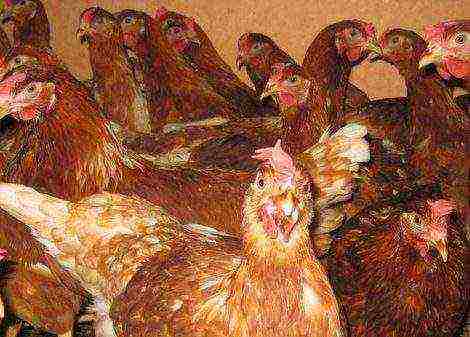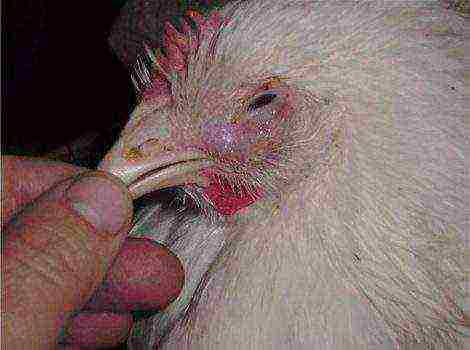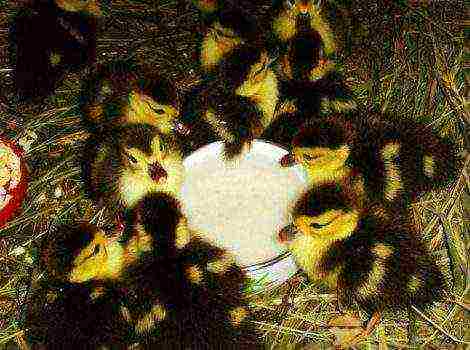Content
Why don't chickens rush and what to do?
Chickens in the household are bred and kept mainly for two purposes: obtaining dietary meat and eggs. The latter are the concentration of vitamins, trace elements, nutrients. Egg production in chickens is manifested at 4.5 - 5 months of age, and productivity decreases when the bird reaches 2.5 - 3 years of age... If it falls, there are reasons for this, by understanding which you can correct the situation, why the chickens stop laying, see below. However, not everything depends on the person, but it is quite possible to minimize negative processes.
Reasons affecting the egg production of chickens
In the process of keeping birds in captivity, people gain invaluable experience that helps to identify and systematize the main reasons for the decline (termination) of egg production... We offer the following systematization of the reasons:
Depends on conditions of detention:
- lighting;
- food;
- ambient temperature;
- stress;
- diseases (conditionally we refer to this category, since the conditions of detention largely determine the presence or absence of the disease).
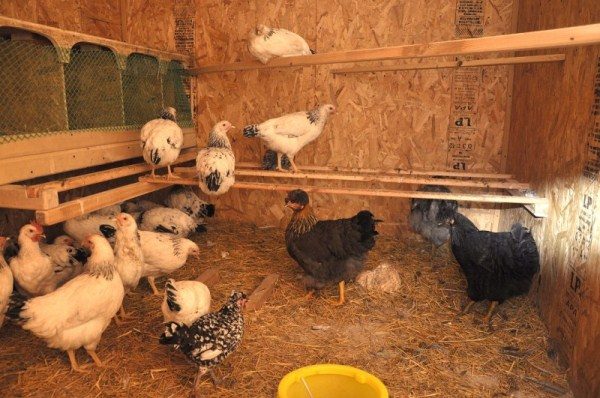
Physiological:
- breed;
- age;
- molting (conditionally attributed to this category)
Natural:
- seasonality;
- the influence of solar and lunar cycles;
- geomagnetic storms and other natural phenomena.
Let's consider in more detail each reason separately.
Lighting
For normal productivity of laying hens need daylight hours in the region of 12-15 hours. Exposure to light on the bird's body is associated with its effect on the optic nerve, hypothalamus, the release of certain substances that stimulate hormones. They, in turn, affect the functioning of the ovaries. We will not delve into the anatomical subtleties of this process. Suffice it to say that the connection between day length and egg production definitely exists.
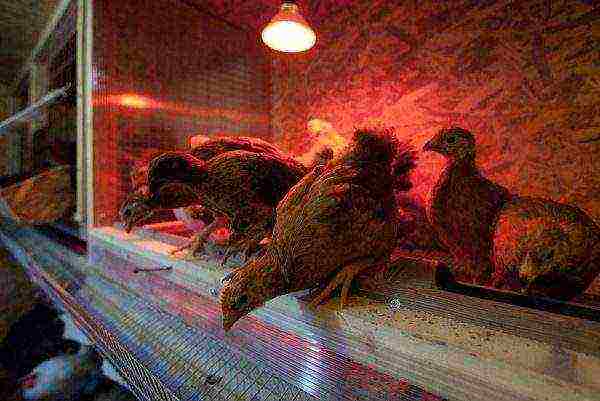
Expedient gradually increase the daylight hours associated with the onset of laying: at first we set it at the level of 10-12 hours, gradually raise it to 14-15. A sharp increase in daylight hours will not give good positive results. If the bird is in a room with small windows or without them at all (with a walking type of keeping), it is better to take a part of the backyard or summer cottage for walking not indoors, but in the open air. The goal is more room for movement, increased daylight hours. If the content of layers is cellular, it is advisable to install fluorescent lamps rather than incandescent lamps. It is important that there is no continuous darkness or bright illumination above the nests themselves. Light shading is sufficient.
Food
Correctly formulated diet and feeding period - recipe for success. Poultry farmers often face two related nutritional problems. This is the absence or decrease in egg production and the problem associated with the fact that birds peck eggs. Both in the first and in the second case, there is only one root - a lack of essential vitamins and microelements in the feed. In addition, an excess of feed leads to obesity, which negatively affects the receipt of a normal number of eggs throughout the year.
The diet
The feed should contain a sufficient amount of proteins, fats, carbohydrates, mineral salts, vitamins. Whole grains form the basis of the diet for laying hens: wheat, corn, barley, triticale, oats, rye can all be fed. It is recommended to alternate grains of different crops in the diet.It is not necessary to mix 5-6 types of grains in one feeding. Otherwise, they choose what they like. The rest is trampled or raked.
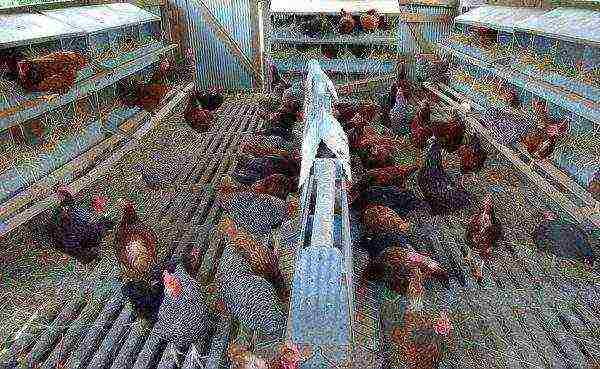
Lack of vitamins and minerals pushes the laying hen to compensate for the insufficient number by pecking on the laid eggs. In this regard, you need to take a number of measures:
- remove eggs from nests in a timely manneras the chicken can crush them accidentally and peck at it. This quickly becomes a habit, and it can be very difficult to wean poultry from such actions;
- make the nests spacious and in sufficient quantity so that the laying hen can occupy a free nest;
- diet do it in such a way that it contains enough trace elements and vitamins. One way to replenish these substances is by adding grated shells and ground egg shells to the feed;
- when adding shells to feed it is important to ensure that it is well dried and finely worn. Shells that are simply split and crushed are not suitable for feeding. Otherwise, all this provokes the chickens to become addicted to pecking the laid eggs.
Approximate diet for laying hens (grams per head per day)
| Feed | Age | |
| 22-47 | 47 and older | |
| Corn | 40 | — |
| Wheat | 20 | 40 |
| Barley | — | 30 |
| Boiled potatoes | 50 | 50 |
| Sunflower meal | 11 | 14 |
| Baker's yeast | 1 | 14 |
| Fish flour | 4 | — |
| Meat or fish waste | 5 | 10 |
| Carrot | 10 | — |
| Pumpkin | — | 20 |
| Greens | 30 | 30 |
| Bone flour | 1 | 1 |
| a piece of chalk | 3 | 3 |
| Shell | 5 | 5 |
Periodicity
To obtain a good result, it is not recommended to feed the hens “as for slaughter”. It means that 3 meals a day - optimal regimen... There should be no grain in the trough at all times. The diet is designed in such a way that feed for the first time them as early as possible in the morning, but after dawn. If it is winter, then we artificially extend the daylight hours. In this case, feed is given after the lighting is turned on. Second time to feed at lunchtime (13: 00-14: 00). Evening feeding is recommended an hour before the bird settles for the night. It is recommended to feed in the evening grain, and in the afternoon to diversify the food with a mash, pure green mass.
Diseases
The greatest danger to egg production is carried by viral diseases:
- Newcastle disease: reduces this indicator to 25-35%.
- Infectious laryngotracheitis: breathing is difficult, the bird dies from suffocation. Naturally, in the process of illness, good results in obtaining eggs cannot be expected.
- Infectious bronchitis: the disease is accompanied by a dysfunction of the oviduct. A decrease in egg production is accompanied by an increase in the proportion of eggs of irregular shape and with a rough shell.
- Infectious encephalomyelitis: reduces egg production by 7-12%.
- Flu: characterized by the death of a large number of birds and a sharp decrease in egg-laying in chickens.
To prevent or minimize the consequences of the disease, carry out a number of preventive measures: laying hens are kept separate from the rest of the bird, they give only high-quality and fresh feed, one or two people take care of the laying hens (since people are carriers of many diseases, it is necessary to limit their access to poultry). In addition, the separation of sick birds from healthy birds and vaccination itself helps.
Temperature
Optimum temperature for laying hens - in the range from 17 to 22 degrees. If it is lower, the bird spends its energy to heat the body. The elevated ambient temperature forces her to drink more moisture, look for places with a temperature lower than in a cozy nest with soft straws. Both the first and the second negatively affect the total number of eggs laid. To maintain the optimum temperature in the hen house, it is necessary to insulate and heat it in winter. In the summer, the premises are provided with good ventilation without drafts and the possibility of walking in the morning and evening, and in the daytime - to hide in the room from the scorching sun rays.
Molting
Moulting is the natural change of feathers in a bird. It usually occurs in the fall, before the onset of winter. The molting period itself lasts from a month to three. The shorter this period, the better the chicken rushes. Another feature: if the hen begins to molt in October-November, then it lays more eggs. Accordingly, the longer the molting period and the earlier it occurs, the lower the egg production.
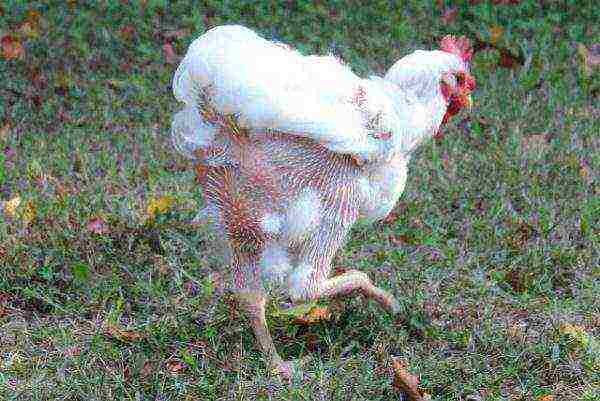
Molting in chickens is influenced by many factors:
- defective and unbalanced food;
- high temperature the environment in the poultry house;
- insufficient amount of consumed liquids;
- too enlarged daylight hours for an extended period;
- action of certain diseases;
- various stress, other factors.
To reduce shedding time a forced change of the bird's feather is carried out. The point of this operation is to save feed, to bring chickens out of the moulting stage together. At the same time, the total molting period is reduced to one and a half months. This is achieved by changing the diet, the length of daylight hours, temperature conditions (temperature rise), artificial starvation, etc.
Stress
Stressful situations always negatively affect the number of eggs laid. It is a shy bird. She is frightened by sharp sounds, knocks, a sharp drop in illumination, the sudden appearance of a person in a chicken coop. Even the sound of rain on glass or metal roofs has a detrimental effect on the egg production process. The chicken perceives everything new with caution, gradually getting used to the changed conditions. Therefore, any move for her is a huge stress. To avoid stressful situations, minimize the above factors or remove them altogether.
Often, a poultry breeder is faced with a situation where, when buying an adult hen in the market, she stops laying. In our opinion, the main reason is the stress received after the move and an absolute change of scenery.
Age
When buying an adult bird at a poultry farm, you should remember:
- the most productive layer age - up to two years. Therefore, if you buy an older bird, there is a high probability that its egg production will gradually decrease;
- at the poultry farm, the livestock is fed with compound feed from the very beginning, the composition of which is very difficult to make at home. therefore a radical change in diet negatively affects on a clutch of eggs.
Breed
To obtain a large number of eggs from one laying hen, you need to grow or purchase chicken of egg breeds. It's believed that the most egg-bearing breed is the Leghorn... However, this is not the case in all cases. In addition, genetics does not stand still. Therefore, you can buy a new breed that will be more adapted to the specific habitat conditions, and will show the best result.
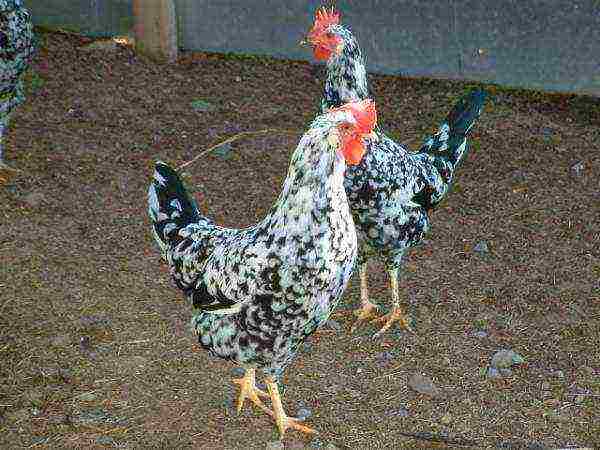
Seasonality: spring, summer, autumn, winter
Usually, spring and autumn are the seasons in which the egg production of chickens falls... What is the reason for this phenomenon? In our opinion, this is due to climatic conditions. It is always colder in winter. To warm itself up, a chicken spends a certain amount of energy, which is no longer used for laying eggs. This can be avoided by installing additional heating in the hen house. Then in winter, spring and autumn, the air temperature in the hen house will remain approximately the same, there will be no abrupt transition of the temperature regime from winter to spring. In autumn, in addition to the change in temperature, molt begins, which also affects egg production. The factors that accompany it and its effect on the hen are indicated above.
In summer, the decrease in the number of laid eggs is due to hot weather.... At temperatures above 25 degrees, the chicken rushes reluctantly, flies onto the perch, opening it, spreading its wings to the side, thereby trying to somehow reduce its body temperature. During this period, she drinks a lot, which also lowers egg production. A well-thought-out ventilation system, ventilation of the room partially eliminates the problem of high ambient temperatures.
In addition to all of the above factors, roosters influence egg production in a certain wayor rather, their proportional relationship to the number of chickens. Many people believe that there should only be one rooster in one pen. Then the number of chickens is limited to ten. Some half a hundred herds of chickens keep four or five roosters in one pen. But if a third of the total population turns out to be roosters, this will lead to a periodic struggle for supremacy.
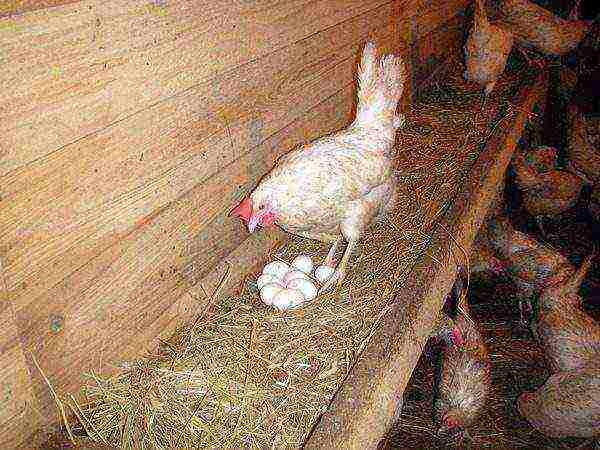
Influence of solar and lunar cycles, as well as geomagnetic storms and other natural phenomena have been little studied. But there is no doubt that they also affect the number of eggs laid. By the way, folk methods of increasing egg production are based on rituals associated with lunar cycles.
In any case, good care, hard work and proper attitude to poultry will play a role, and the laying hens will definitely thank you.
